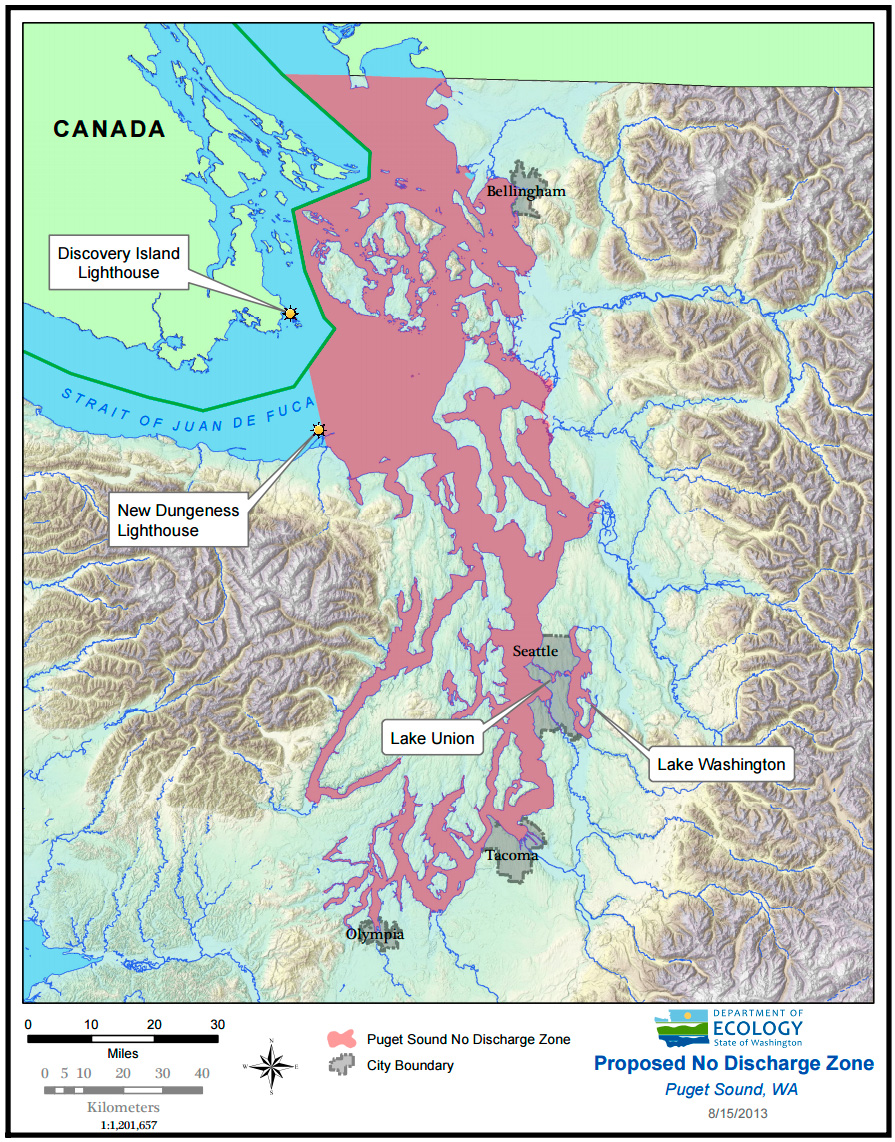Action will protect shellfish, public health, and water quality
It’s official, Puget Sound is now off limits to vessel sewage.
Washington State Department of Ecology Director Maia Bellon signed into law the Puget Sound No Discharge Zone on Monday, April 9.
“This is a historic day for the protection and restoration of Puget Sound,” said Director Bellon.
“Puget Sound is an icon of the Pacific Northwest. Its cultural and economic importance cannot be overstated. It’s the lifeblood of our renowned salmon, shellfish and orcas. Stopping the release of vessel sewage into our waters is absolutely the right thing to do,” Bellon added.
The new rule takes effect May 10 and bans the discharge of any type of sewage (blackwater), treated or untreated, within Puget Sound. There is no change to graywater requirements. Vessels looking to empty their loads will need to use a pump-out station or wait until they are out of the NDZ.
In establishing its first no discharge zone, Washington joins 26 other states and more than 90 no discharge zones in the U.S.
The new rule also establishes geographic boundaries, how to close marine sanitation devices, effective dates for certain commercial vessels, and enforcement authority.


Image courtesy Department of Ecology
The NDZ boundaries include all marine waters of Washington State inward from the line between the New Dungeness and Discovery Island lighthouses, to the Canadian border, the fresh waters of Lake Washington, and all the water bodies that connect Lake Washington to Puget Sound.
“Making Puget Sound a no discharge zone for vessel sewage connects a missing piece in our strategy to clean up and restore the Sound,” said Heather Bartlett, the water quality program manager at Ecology. “Our shellfish beds, swimming beaches, and protected areas are especially vulnerable to bacteria and viruses in vessel sewage. This will prevent pollution from impacting these areas and protect human health and overall water quality.”
The Washington Department of Health expects to upgrade or open approximately 1,000 acres of commercial shellfish beds for harvesting near marinas with the establishment of the NDZ.
The rule comes after a robust five-year public outreach and evaluation effort, including multiple public comment periods. To put the no discharge zone in place, the Department of Ecology had to submit a proposal to the Environmental Protection Agency. In 2014, the draft proposal alone drew more than 26,000 comments, of which more than 25,000 were in support and about 525 expressed opposition or concerns. In 2016, EPA received more than 40,000 comments in support of Washington’s proposal. EPA approved Ecology’s no discharge zone proposal in February 2017.
Ecology’s website contains information on pumpout options, including locations, for boaters and vessel operators. For more on the Puget Sound No Discharge Zone, visit Ecology’s website and for additional information, visit pumpoutwashington.org.
Related Links
Ecology’s No Discharge Zone website – https://ecology.wa.gov/Water-Shorelines/Puget-Sound/No-discharge-zone
Pumpout Washington – https://pumpoutwashington.org/
Contact information
Ty Keltner, Communications
ty.keltner@ecy.wa.gov
– Department of Ecology








